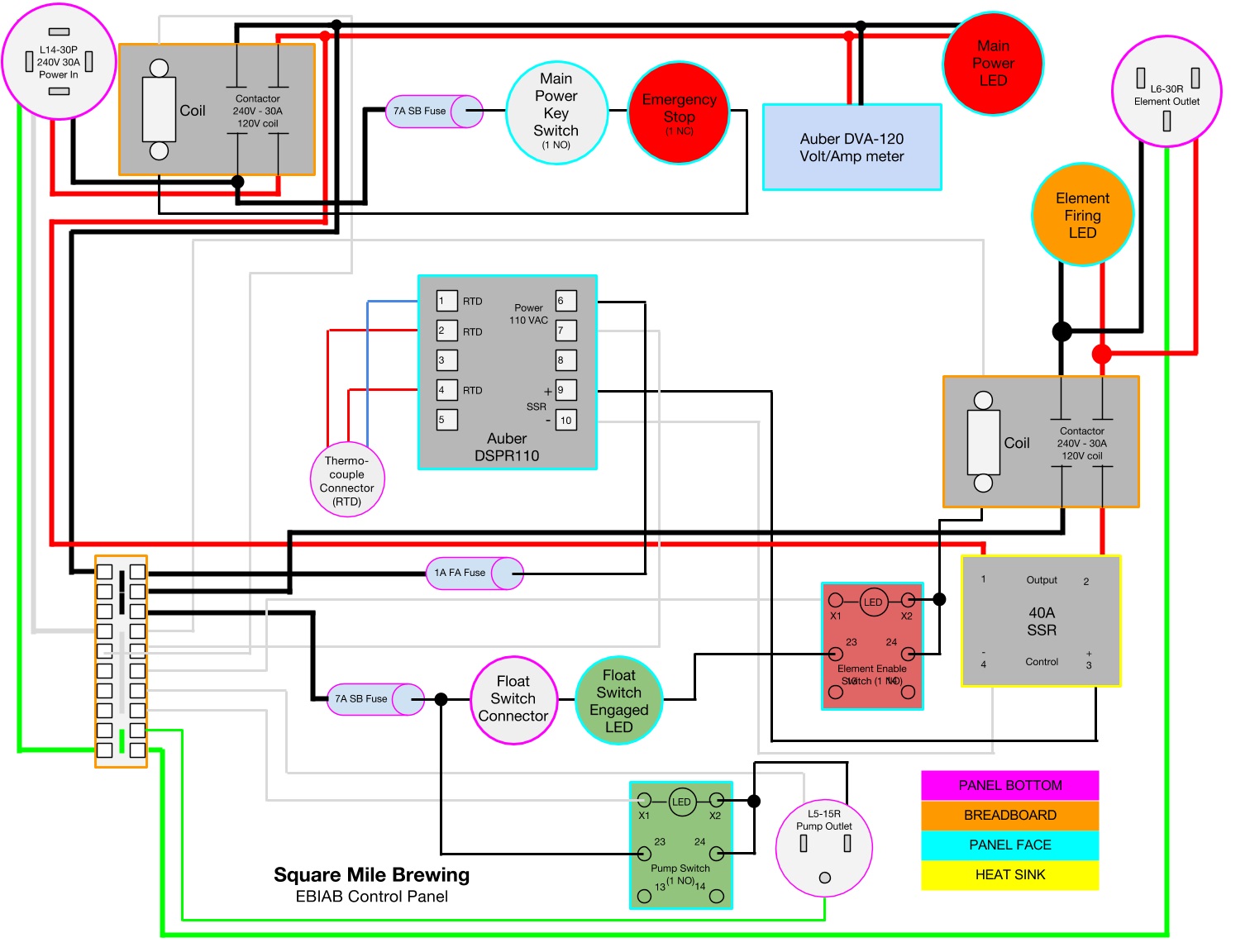Was your element plugged in when you tested pin 2 of the SSR? I'm guessing it was not. According to Crydom (a major manufacturer of SSR's) you cannot properly test an SSR with a voltmeter. To check the SSR output you should have the power on and the element plugged in (obviously the element should be in a large volume of water.)
The control outputs of the PID and DSPR1 are floating w.r.t ground, so trying to measure voltage between them and ground won't give good data. What you want to do is:
- Unplug the element
- Put the control selector switch in the DSPR1 position
- Set the DSPR1 to 100% output
- Measure the voltage between pins 3 & 4 of the SSR with the voltmeter on a DC scale
I would do the test on pins 3 & 4 before doing the hot element test.
Brew on
Just tested and got 8 VDC across the SSR. Does that sound about right?



